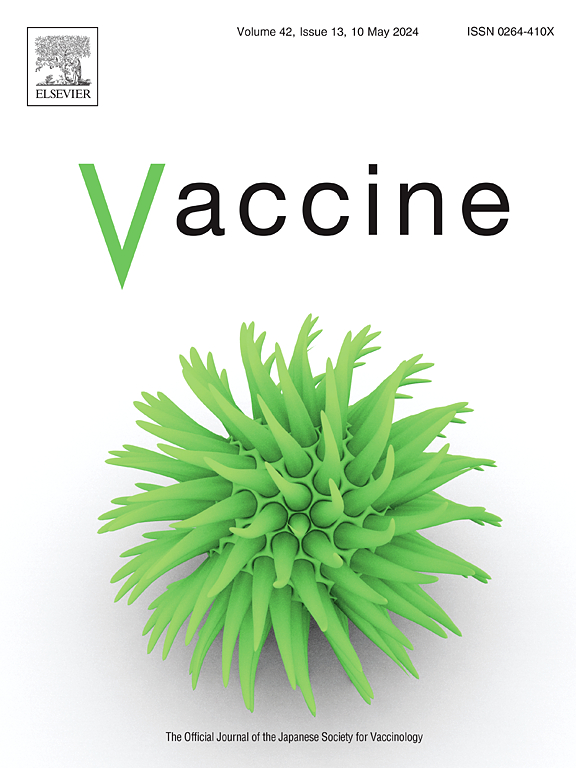Tracking clinical severity of influenza in adult hospitalized patients in 2024: Data from the FluTer registry in Poland
IF 4.5
3区 医学
Q2 IMMUNOLOGY
引用次数: 0
Abstract
In late 2024, infectious disease specialists in Poland became alarmed about increased influenza-related hospitalizations, prompting concerns about disease severity shifts and underlying causes. Therefore, this retrospective study aimed to analyze the demographic and clinical characteristics of hospitalized influenza patients in 2024. Data were collected from thirteen infectious disease units participating in the FluTer registry. Hospitalization trends were compared with national surveillance data. Patient profiles, symptoms, laboratory results, and clinical severity were analyzed across early (2023/2024 epidemic season; January–August) and late 2024 (2024/2025 season; September–December), including sex-based differences. A total of 298 influenza-related hospitalizations were recorded in 2024, representing a 326 % increase from 2023, despite national surveillance reporting the lowest influenza incidence in three years. The majority (95.1 %) of cases were due to type A influenza, with 37.2 % of hospitalizations and 57.1 % of in-hospital deaths occurring in December 2024. Hospitalized patients were predominantly elderly, unvaccinated, obese, or had comorbidities. There were no significant differences in patient characteristics between the beginning and end of 2024, apart from a higher prevalence of peripheral vascular disease and asthma in later months. In-hospital mortality between September and December 2024 reached 6.1 %, peaking at 7.2 % in December. This was higher than the rates recorded in 2022 (1.7 %) and 2023 (5.1 %). Notably, all deaths in 2024 occurred among unvaccinated individuals. Nearly all patients (95.2 %) received oseltamivir, and over 60 % required antibiotics due to bacterial coinfections. The rise in hospitalizations and mortality likely resulted from population vulnerability and post-pandemic effects rather than increased viral severity. Findings emphasize the need for improved vaccination coverage, enhanced surveillance, and timely antiviral access. Reducing antibiotic overuse through better influenza prevention is crucial for combating antibiotic resistance. Continued monitoring through the FluTer registry is essential for optimizing influenza management and preparedness.
2024年追踪成年住院患者流感临床严重程度:来自波兰FluTer登记的数据
2024年底,波兰的传染病专家对流感相关住院人数的增加感到震惊,引发了对疾病严重程度变化和潜在原因的担忧。因此,本回顾性研究旨在分析2024年流感住院患者的人口学和临床特征。数据是从参与FluTer登记的13个传染病单位收集的。住院趋势与国家监测数据进行了比较。分析早期(2023/2024年流行季节)患者概况、症状、实验室结果和临床严重程度;1月至8月)和2024年末(2024/2025赛季;9月至12月),包括性别差异。尽管国家监测报告的流感发病率为三年来最低,但2024年共记录了298例与流感相关的住院病例,比2023年增加了326%。大多数病例(95.1%)是由A型流感引起的,37.2%的住院病例和57.1%的院内死亡病例发生在2024年12月。住院患者主要是老年人、未接种疫苗、肥胖或有合并症。在2024年年初和年底之间,患者特征没有显著差异,除了在随后的几个月中外周血管疾病和哮喘的患病率较高。2024年9月至12月住院死亡率达到6.1%,12月达到7.2%的峰值。这比2022年(1.7%)和2023年(5.1%)的比率要高。值得注意的是,2024年的所有死亡都发生在未接种疫苗的个人中。几乎所有患者(95.2%)都接受了奥司他韦治疗,超过60%的患者由于细菌共感染而需要抗生素治疗。住院和死亡率的上升可能是由于人口脆弱性和大流行后的影响,而不是病毒严重程度的增加。研究结果强调需要改善疫苗接种覆盖率、加强监测和及时获得抗病毒药物。通过更好地预防流感来减少抗生素的过度使用,对于对抗抗生素耐药性至关重要。通过FluTer登记继续进行监测对于优化流感管理和防范至关重要。
本文章由计算机程序翻译,如有差异,请以英文原文为准。
求助全文
约1分钟内获得全文
求助全文
来源期刊

Vaccine
医学-免疫学
CiteScore
8.70
自引率
5.50%
发文量
992
审稿时长
131 days
期刊介绍:
Vaccine is unique in publishing the highest quality science across all disciplines relevant to the field of vaccinology - all original article submissions across basic and clinical research, vaccine manufacturing, history, public policy, behavioral science and ethics, social sciences, safety, and many other related areas are welcomed. The submission categories as given in the Guide for Authors indicate where we receive the most papers. Papers outside these major areas are also welcome and authors are encouraged to contact us with specific questions.
 求助内容:
求助内容: 应助结果提醒方式:
应助结果提醒方式:


